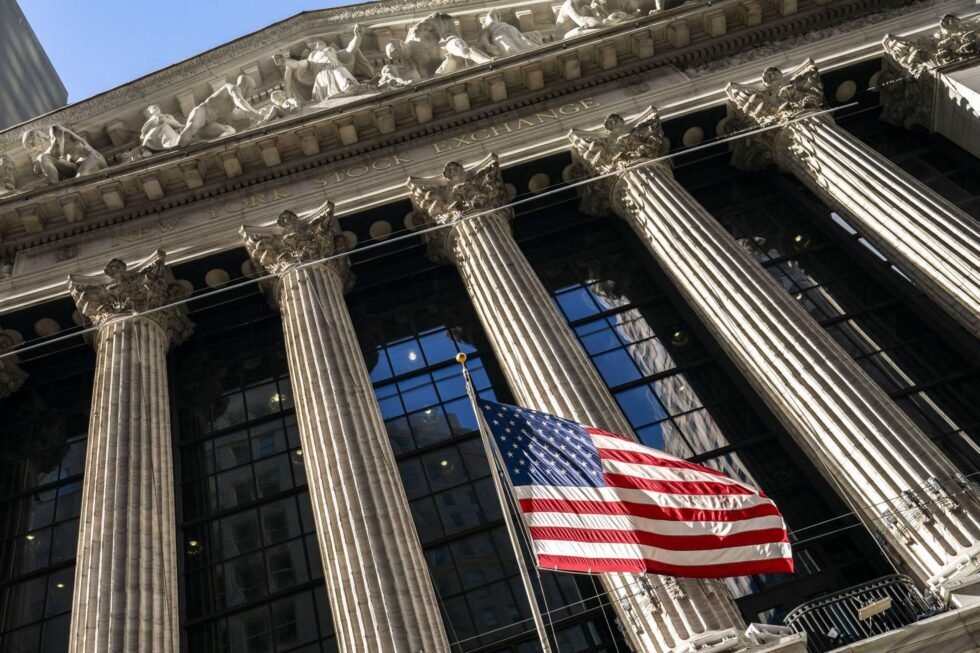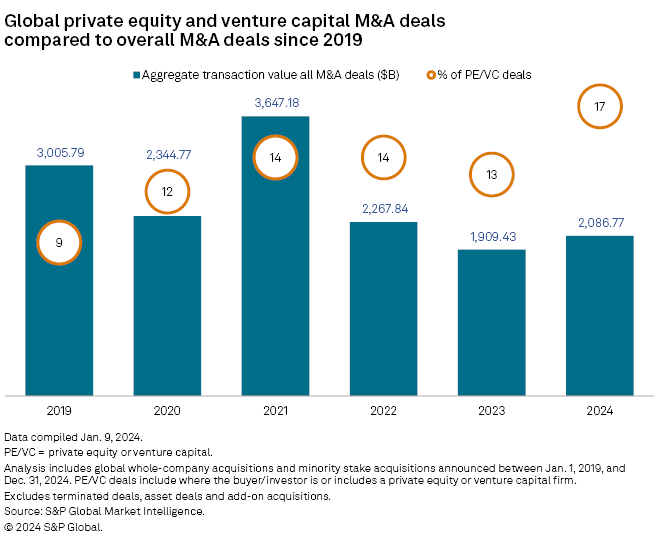- PE 150
- Posts
- PE's Big Infrastructure Opportunity, Constellations $26B Deal, PE Hiring Trends
PE's Big Infrastructure Opportunity, Constellations $26B Deal, PE Hiring Trends
This week we dive into one of the largest PE opportunities ever, the Data Centers industry driven by the new productivity revolution.
Happy hump day !
This week we dive into one of the largest PE opportunities ever, the Data Centers industry driven by the AI revolution.
On the liquidity front, PE faces a major liquidity challenge as securing subscription lines of credit, once a key liquidity tool, has become increasingly difficult.
Private equity firms emphasize talent management as a key driver of growth and competitiveness, with retaining and hiring top talent being critical for success in a competitive and innovation-driven environment.
NAFTA initially boosted US trade, particularly with Mexico, but momentum slowed post-2000s due to global trade shifts. Its 2020 reboot, USMCA, now faces uncertainty with potential Trump-era policy changes in 2025.
— PE150 Team
📚 Data Dive
Monthly Special Edition: AI’s Billion-Dollar Appetite for Data Centers
The marriage of generative AI and data centers is a love story worth $1.3 trillion by 2032, according to Bloomberg Intelligence. From training massive language models to running real-time inference, AI's insatiable need for processing power is reshaping infrastructure priorities.
CAGR Superstars: Generative AI training infrastructure leads with a 60% CAGR, driven by services like cloud-based GPUs. Meanwhile, digital ads ($192B) and AI-powered assistants ($89B) highlight the diversification of revenue streams.
Hardware Evolution: AI servers ($132B) and storage solutions ($93B) are on track to dominate capital allocation as traditional IT investments shift toward AI-friendly configurations.
Power Surge: AI’s energy demands are set to push U.S. data centers to account for 8% of the nation’s electricity by 2030—up from 3% today. That’s 47GW of new capacity (translation: $50B in investments).
Labor Productivity Lift: McKinsey estimates AI could contribute $2.6–4.4 trillion annually to global productivity, with sectors like retail, banking, and life sciences reaping the most.
Why It Matters 🧩
Private equity sees dollar signs in data center scalability, with hyperscale providers like AWS and Azure bridging AI’s hardware-software gap. For investors, this means chasing opportunities where power, scalability, and specialized AI hardware converge. It's a bet on the infrastructure that makes generative AI ubiquitous.
What’s next? Expect fierce competition for data center acquisitions, high-stakes partnerships, and a grid strained under AI's unrelenting hunger. The future isn’t just automated—it’s energy-intensive.
Want to learn more?
Premium Perks
Since you are an Executive Subscriber, you get access to all the full length reports our research team makes every week. Interested in learning all the hard data behind the article? If so, this report is just for you.
|
Sponsored content
An entirely new way to present ideas
Gamma’s AI creates beautiful presentations, websites, and more. No design or coding skills required. Try it free today.
📈 Trend of the week
The Talent Imperative in Private Equity Growth
Private equity remains a highly people-intensive industry, and CFOs across firms continue to see talent management as a critical pillar for sustaining growth and competitiveness. Among firms managing over $15 billion in AUM, 76% identified retaining talent as their top priority for remaining competitive, emphasizing the industry's heavy reliance on expertise and stability in leadership teams. Meanwhile, 52% of respondents highlighted the importance of hiring the right talent, particularly as firms expand into new strategies and markets.
This focus on talent underscores a broader trend in private equity: in a competitive environment where innovation and operational excellence are paramount, assembling and retaining high-performing teams is seen as essential to delivering value to investors and portfolio companies alike.
Beyond talent, private equity CFOs are also focused on diversifying their capital sources and product offerings to enhance growth. With retail and wealth channels gaining traction as new sources of funding, many firms are looking to attract alternative investors through innovative and tailored investment products.
The chart highlights that while data management (24%) and expanding product offerings (30%) rank lower as immediate priorities, they remain part of a long-term strategy to support scale and efficiency. Private equity leaders are also navigating the cultural and strategic aspects of growth; when considering potential transactions, 53% of CFOs emphasize finding partners who can contribute to business expansion, while 47% also prioritize preserving firm culture. This dual focus on people and strategy positions private equity firms to thrive in an increasingly competitive landscape.
💰Liquidity Corner
Sub lines - End of an era
The private equity market is facing a significant liquidity challenge as subscription lines of credit (sub-lines), once a vital liquidity tool, have become increasingly difficult to secure.
The collapse of key lenders like Silicon Valley Bank, Signature Bank, and First Republic Bank has removed a substantial portion of available capital from the market. These banks, previously active in offering sub-lines, have left general partners (GPs) scrambling to diversify their banking relationships to manage concentration risk. Rising interest rates have further diminished the appeal of floating-rate loans, while banks are tightening their lending criteria and prioritizing existing relationships, leaving private equity firms, both large and small, struggling to access these critical credit facilities.
Adding to the complexity, institutions like First Citizens and JPMorgan, which acquired assets from the failed banks, have not clarified their policies on issuing new loans, leaving former clients in limbo.
Smaller and mid-market GPs, once serviced by banks like JPMorgan, are now finding themselves sidelined as these banks focus on larger clients and closer relationships. Even major sponsors are being turned away by top banks, signaling a dramatic shift in how liquidity is distributed. With banks requiring GPs to maintain operating accounts for each fund they wish to finance, navigating this fragmented landscape has become an operational burden.
As access to sub-lines diminishes, the private equity sector is confronting a new reality where liquidity tools once taken for granted are now scarce, forcing firms to rethink their funding strategies.
🤝 Deal of the Week
Constellation Powers Up with $26.6B Calpine Deal
Baltimore-based Constellation Energy is snapping up Calpine Corp in a monumental $26.6 billion cash-and-stock deal, reshaping the U.S. energy market. Representing the largest low-emission energy supplier in the U.S., the move positions Constellation to dominate the market for AI data center power and transportation electrification, two growing demand drivers. Legal heavyweights Kirkland & Ellis, Latham & Watkins, and White & Case spearheaded this historic transaction. The deal also shines a spotlight on advisors Lazard, JP Morgan Securities, and Evercore. Notably, shares of Constellation have more than doubled this year, fueled by interest in nuclear power and climate-friendly initiatives. Expect this merger to finalize in late 2025, provided regulatory hurdles are cleared.
Sponsored content
Unlock the full potential of your workday with cutting-edge AI strategies and actionable insights, empowering you to achieve unparalleled excellence in the future of work. Download the free guide today!
🏦 Private Credit Corner
The Heavyweights Hold the Cash
Private credit is increasingly resembling the exclusive VIP section of the finance world, where a select group of major players are amassing significant amounts of dry powder. Leading firms like Oaktree, Ares, Goldman Sachs, HPS Investment, and Blackstone hold a commanding presence. Collectively, the top 10 U.S. private debt fund managers account for an impressive 40-45% of all dry powder across private debt strategies, solidifying their position as top choices for limited partners.
This concentration isn’t just about who has the cash—it’s about who gets the calls when LPs want to deploy capital. The top five managers hold a disproportionately large share of dry powder, a clear signal that LPs are placing outsized bets on the biggest players.
Fun fact: The total amount of global dry powder for private credit hit a staggering $450 billion in 2024, nearly double the figure from a decade ago. Expect a lot more of it to flow into the hands of these juggernauts.
📊 Macro View
NAFTA: A Mixed Trade Legacy with Questions for the Future
NAFTA was supposed to turn the US-Canada-Mexico trade bloc into an economic juggernaut. The good news? It worked—at least initially.
US trade with both neighbors surged through the 1990s, especially with Mexico. But the party cooled in the 2000s: US-Canada trade shares dipped below pre-NAFTA levels, while US-Mexico trade gains held steady, albeit modestly.
The numbers show NAFTA wasn’t a perpetual motion machine for trade growth, but it did nudge the needle when the economy needed it. Post-2008 global trade shifts may have played a larger role in slowing momentum than the agreement itself. NAFTA’s 2020 reboot as the USMCA now carries the weight of reviving those promises.
With whispers of a second Trump presidency in 2025, could trade policies take another sharp turn? From tariffs to renegotiations, a return of his administration would likely test the durability of the USMCA and the future of North American trade. If reinstated, we could see a renewed emphasis on protectionist policies, potential disruptions in global supply chains, and a strategic push to renegotiate trade deals in ways that prioritize domestic manufacturing and economic nationalism.
🏆 This Week in History
The Ill-Fated AOL-Time Warner Merger
On January 10, 2000, two corporate giants, AOL and Time Warner, joined forces in what was hailed as a groundbreaking $182 billion merger, creating a $350 billion powerhouse at the intersection of traditional and digital media. AOL, the largest internet provider at the time with 30 million dial-up users, merged with Time Warner, a conglomerate that housed HBO, CNN, Warner Bros., and Time magazine. The union was touted as a transformative moment, combining old media’s content and distribution with new media’s cutting-edge internet technology. Optimism abounded, with industry insiders calling it a new era for media dominance. But beneath the surface, this “perfect match” was a ticking time bomb.
Within months, the cracks began to show. The dot-com bubble burst, the economy slid into recession, and broadband internet rose to prominence, rendering AOL’s dial-up service obsolete. By 2002, the combined company recorded a staggering $98.7 billion loss, the worst annual loss in corporate history. Shareholders and employees bore the brunt, with retirement accounts wiped out and fortunes like Ted Turner’s $8 billion stake eroded. Once lauded as the smartest dealmakers in the room, AOL-Time Warner’s executives were lambasted for their hubris and inability to recognize the inflated valuations of the dot-com era. In 2009, the company split, with AOL spun off as an independent entity, later sold to Verizon for just $4.4 billion in 2015. Meanwhile, Time Warner moved on, ultimately acquired by AT&T in 2018 for $85 billion. The merger, once heralded as the future of media, became a cautionary tale of overreach, hubris, and the pitfalls of mismatched corporate visions.
📰 Interesting Articles
Advertise In PE 150!
If you’d like to consider advertising in PE 150, answer three quick questions to plan a campaign and get a quote in one hour or less! Click here to learn more!
🐣 Tweet of the week
Sixty-five continuation funds closed globally in 2024 with more managers than ever embracing the opportunities of this GP-led secondaries vehicle.
Read more: okt.to/6t2GoB#GPs#secondariesinvesting#investing#alternativeinvestment#alternativesassets
— Preqin (@Preqin)
11:00 AM • Jan 20, 2025
"Innovation distinguishes between a leader and a follower"
Steve Jobs








